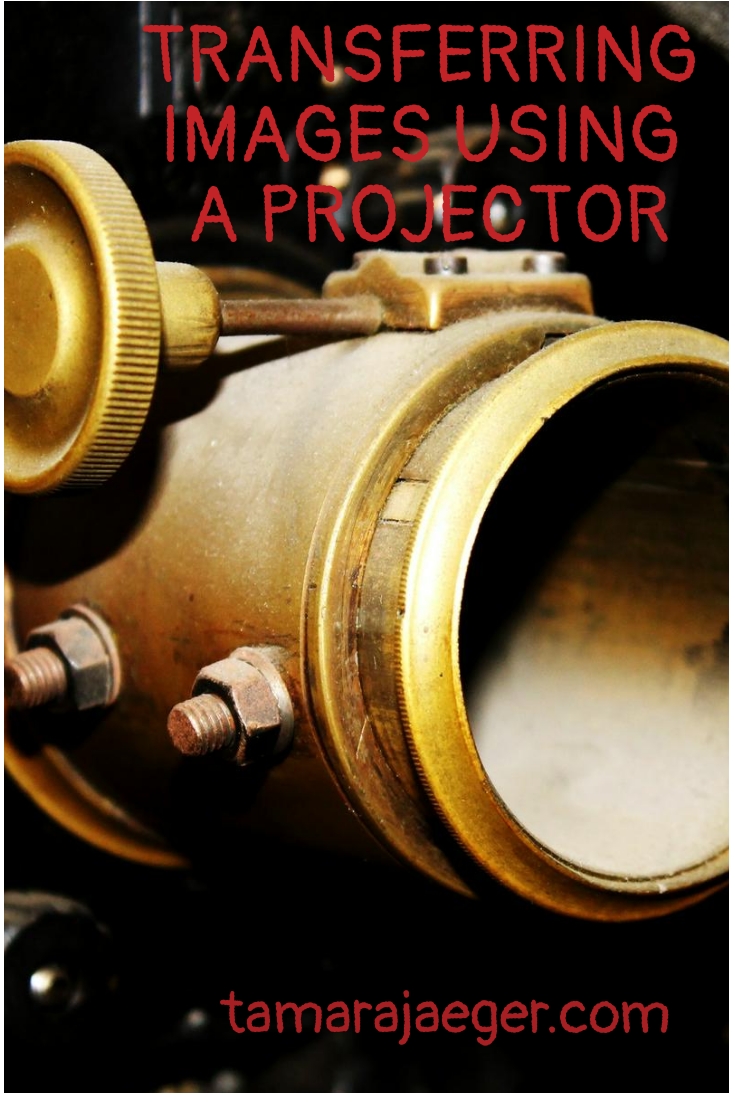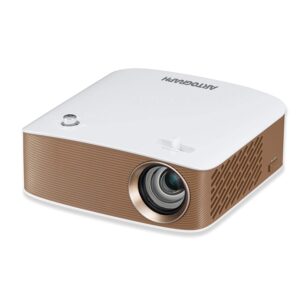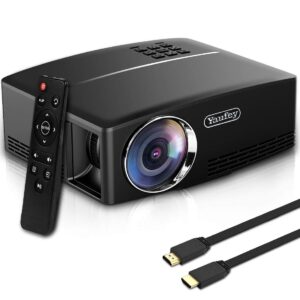

Transferring Images Using a Projector
I’ve recently been experimenting with ways to speed up my process when making my torn paper collages. Let’s face it—gluing down hundreds or thousands of tiny, hand-torn paper fragments takes a lot of time. Unfortunately, there’s no way around that. The only place I can see to speed things up a bit is in the prep work. Namely, the underdrawing.
The initial drawing for the piece is critical. If it’s not quite right, it’s nearly impossible to get the final piece to look good. This is particularly important for things like pet portraits, where the subject is specific and recognizable. Sketching out the subject, then erasing and tweaking until it’s finally just right can take a lot of time. There are a number of ways to make sure the angles and proportions are correct, but it all takes time. So one day I thought “What about one of those art projector things?” I work mostly from photo references, so if I could project the image onto the paper and essentially trace it, that would certainly speed things up!

Artograph Flare 150 projector
Now, some of you are probably thinking “but that’s cheating!” And that’s certainly one way of looking at it. On the other hand, regardless of how the underdrawing got there, the difficult part of the work is in selecting, shaping and layering the magazine fragments to create an image that contains the needed range of values, highlights and shadows.
So I decided to try one out. First, I looked at the actual
art projectors. Those are nice, but expensive. I couldn’t justify the cost for something I was just experimenting with, though I might consider splurging on one in the future. I ended up getting a regular home movie projector. There are a ton to choose from online and they can be Much cheaper than the ones created specifically for artwork. Granted, the art projectors are probably better overall, since the movie projectors have a somewhat limited working distance (I don’t typically need to blow up my images to “wall size”!) and the resolution for working up close is somewhat poor. But I also really only need a rough sketch of the shape and major features, not a photo-like reproduction of the image, so the poorer resolution isn’t really much of a problem.

Home movie projector
I typically prop the projector up on a stack of boxes, pointed at a wall that has a bookshelf that I can place my paper pad against. The limited focusing range of the projector means that much of the adjustment in size and focus must be done by moving the projector itself backward and forward to get the image the way I want it. There’s definitely a limit on how small you can make the image—it simply won’t focus if the projector is too close to the wall. Enlarging images onto large canvases, large paper sizes, or for wall murals would be a better use of this technique than attempting to transfer small images. I suspect the art projectors would provide a better focusing distance and resolution for smaller image transfers.
Depending on the quality of the projector, the room can need to be fairly dark to see the image well. For the one I have, I find that turning off the lights in the room is sufficient if I’m working at night. I haven’t tried to use the projector during the daytime. While my projector allows a laptop to be connected directly, I usually transfer the images onto a USB stick and use that, since it allows me more leeway for moving the projector around. Another issue I’ve found is that the projector runs single images in a slide show mode, which causes it to flip between images or to re-project a single image after a short amount of time. The way I’ve gotten around this is by placing each image into its own folder, so the projector won’t switch between multiple images on the flash drive and by pressing the ‘pause’ button after the ‘run’ button, so it holds the image steady instead of repeatedly refreshing the image. This allows me to load several images onto the flash drive so I can prep for multiple pieces in one session, instead of having to set the project up each time I want to sketch out a new piece.
I’m still not sure I’m totally happy with this method of image transfer. It definitely would work better for enlarging images than for transferring small images. However, it Does speed things up considerably and gives acceptable quality and performance for the price. I might have to splurge on one of the more expensive art projectors at some point, to see if those work better. And hey, if I ever unexpectedly need to show a movie to a group of people, I’m all set!
*Please note that this post contains affiliate links and any sales made through such links will reward me a small commission – at no extra cost for you.
Thanks for posting. I thought I was loosing it. I just got a Artograph Flare 150 off eBay and was tracing my first portrait which due to the learning curve took me a bit of time. All of a sudden the photo changed into a moving image that I have never seen before in any of my work. I will try your suggestion.
Let me know how you get on!